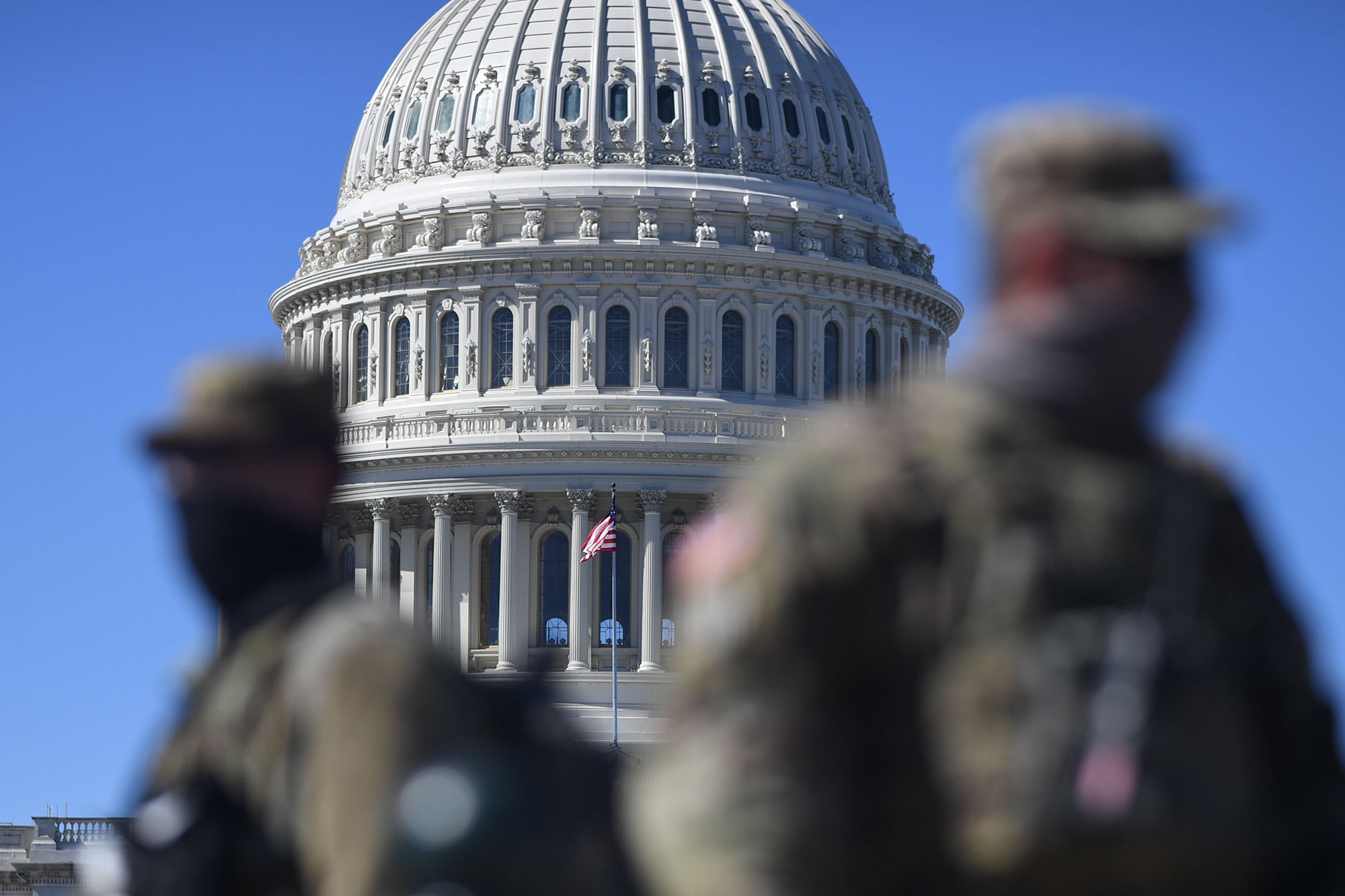An airman uses a government-issued computer to watch videos of a group known for violent confrontation. A warehouse contractor changes the subject when asked about his three-leaf clover tattoo with a swastika in the middle. How should their Air Force colleagues respond?
A recent Air Force slideshow, dated Feb. 17 and posted Wednesday to the unofficial Air Force amn/nco/snco Facebook page, looks to answer that question as part of the military’s ongoing effort to root out extremist ideology in the armed forces. The Air Force confirmed the slides’ authenticity Thursday.
The eight-page presentation prepared by the Judge Advocate General’s Office, titled “Identifying and Addressing Impermissible Behavior,” is intended to guide units through potentially thorny discussions of what constitutes “extremism” in the ranks.
Pentagon leaders are pushing commanders to discuss political, racist or other beliefs that could fly in the face of the military’s service to the country, such as affiliations with anti-government or white supremacist groups, after current reservists and former service members participated in the deadly Jan. 6 riots at the U.S. Capitol.
Because membership in an organization like the Proud Boys or Atomwaffen Division is not specifically banned under Pentagon rules, the Air Force slides outline instances where activity would cross the line into extremist behavior.
Extremists use, or threaten to use, force to “obtain the goals of a belief that may otherwise be politically/socially acceptable,” according to the Air Force. “Stated differently, impermissible behavior is anything that negatively impacts good order and discipline.”
The service pointed to several cases in which military employees could be investigated and punished for concerning behavior.
“They are NOT actual cases. They are sample cases developed to highlight different [DOD and Air Force Instruction] references,” Air Force spokesperson Ann Stefanek said in an email Thursday.
Some instances involved allegations of discussing membership in an extremist group online, looking up white supremacist content on a government computer, or sharing classified information with a neo-Nazi group.
“Civilian employee SUBJECT made statements declaring he was a member of ‘Proud Boys,’” a group classified by the FBI as extremist with ties to white nationalism, an Air Force slide said. “[Air Force Materiel Command] issued a debarment order.”
Other examples appear to be based on widely publicized cases, including that of former Technical Sgt. Cory Reeves, who was demoted and discharged from the Air Force in 2020 over active participation in the white nationalist group Identity Evropa, as well as that of Air Force Staff Sgt. Steven Carrillo, an airman with alleged ties to the far-right, anti-government “boogaloo movement” who was charged with murder and attempted murder last summer.
Another describes the case of Vasillios Pistolis, a Marine who attended the 2017 “Unite the Right” rally in Charlottesville, Va., and posted online that he “cracked 3 skulls open with virtually no damage to myself,” according to the slides. ProPublica reported in 2018 on Pistolis’s involvement in the far-right rally and with the neo-Nazi groups Atomwaffen Division and Traditionalist Workers Party.
The subject in the example left the military after forfeiting two-thirds of their pay, a demotion of two ranks and 28 days of confinement. The individual was “convicted at a summary court-martial for failing to obey an order and false official statement,” according to the slideshow.
Other parts of the slideshow further show how interest in extremist causes or groups can evolve into active participation through association, action and advocacy, which the Defense Department prohibits.
At first, that could look like visiting websites that promote supremacist ideology or violence to achieve a political goal, but escalates into paying dues to a group, participating in their rallies or distributing their material.
Social media posts that empathize with “impermissible causes” could be a red flag that someone is radicalizing over time.
The Air Force laid out steps commanders could take if they discover an airman is interested in or becoming more involved with supremacist or extremist ideas.
For example, if a Space Force guardian tweets, “The people arrested at the Capitol Building should be let go by the gov’t or other groups may act,” a commander could write them up for improper use of a government computer and ask OSI to investigate, the Air Force slideshow said.
The service also directed commanders to consider the First Amendment rights of civilians and contractors in those situations, as well as the “adverse impact on the work of the agency” when deciding how to react. It similarly notes the complications of disciplining military personnel wearing uniforms at demonstrations or a civilian employee who advertises an after-hours talk by a known hate group leader.
“No one is immune from being lured into the world of extremism,” the Air Force said. “We can all fall victim to the process of becoming extreme in our thinking or belief systems.”
Some online, pushing back on what they see as an attempt to crack down on conservative viewpoints and white members of the military, criticized the Air Force’s slides for failing to explicitly discuss left-wing militant groups as part of the extremism spectrum.
The Pentagon said Feb. 3 that units had 60 days to pause regular operations for a discussion of how to identify and address concerning or potentially dangerous activity. How each unit handles that conversation is up to its leaders, whether it lasts a full day or an hour.
The Air Force has said it will look into claims of extremist behavior that arise from the standdown discussions.
“We are all accountable for the culture, good order and discipline, and safety of our units,” the Air Force slideshow said. “Impermissible behavior left unaddressed erodes unit trust and cohesion and places military lethality and effectiveness at risk.”
Rachel Cohen is the editor of Air Force Times. She joined the publication as its senior reporter in March 2021. Her work has appeared in the Washington Post, the Frederick News-Post (Md.), Air and Space Forces Magazine, Inside Defense, Inside Health Policy and elsewhere.





